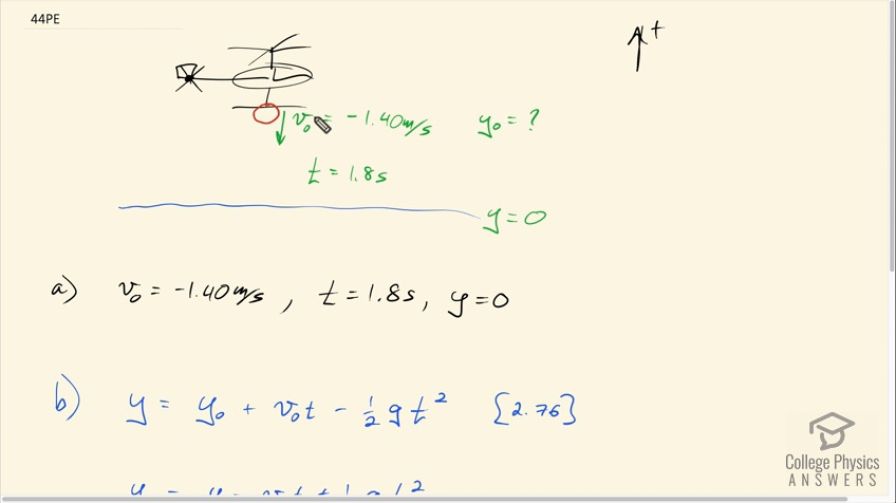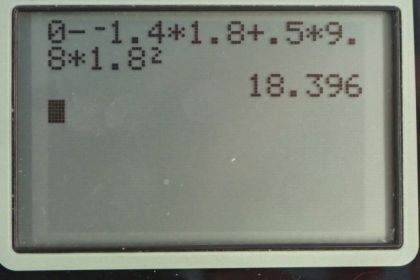Question
A rescue helicopter is hovering over a person whose boat has sunk. One of the rescuers throws a life preserver straight down to the victim with an initial velocity of 1.40 m/s and observes that it takes 1.8 s to reach the water. (a) List the knowns in this problem. (b) How high above the water was the preserver released? Note that the downdraft of the helicopter reduces the effects of air resistance on the falling life preserver, so that an acceleration equal to that of gravity is reasonable.
Final Answer
- , ,
Solution video
OpenStax College Physics, Chapter 2, Problem 44 (Problems & Exercises)

vote with a rating of
votes with an average rating of
.
Calculator Screenshots
Video Transcript
This is College Physics Answers with Shaun Dychko. A helicopter throws down a life-preserver with an initial velocity of negative 1.40 meters per second. We say this velocity is negative because we take upwards to be the positive direction and it's observed that this life-preserver takes 1.8 seconds to reach the water. The water we'll take to be the zero point in our position and that means the initial position we don't know and we have to find it, that's going to be part (b). So for part (a), we are just writing down the things that we know; the initial velocity is negative 1.40 meters per second, the time it takes to reach the water is 1.80 seconds and the final position we know is zero because we defined the water to be the zero position because normally we measure height with respect to the ground or the ocean or something. So part (b), we are gonna figure out what is the position of this helicopter. Now we know what y is but we don't know y naught, the initial position and this is equation [2.76] which says the final position is the initial position plus the initial velocity times time minus one-half times acceleration due to gravity multiplied by time squared. And we are going to rearrange this to solve for y naught, which is the height of the helicopter, and we are going to subtract v naught t and add one-half gt squared to both sides. And so we'll take all this and copy it and paste it over here... something like that... and we end up with this line here. And so the initial position is the final position minus v naught t plus one-half gt squared So that is zero because that's the final position, zero meters, minus negative 1.40 meters per second multiplied by 1.80 seconds and you have to be careful with minus signs here; this minus from the equation and the negative on the initial velocity together makes a positive and then we add to that one-half times 9.8 meters per second squared times 1.80 seconds squared giving 18 meters is the height of the helicopter.
